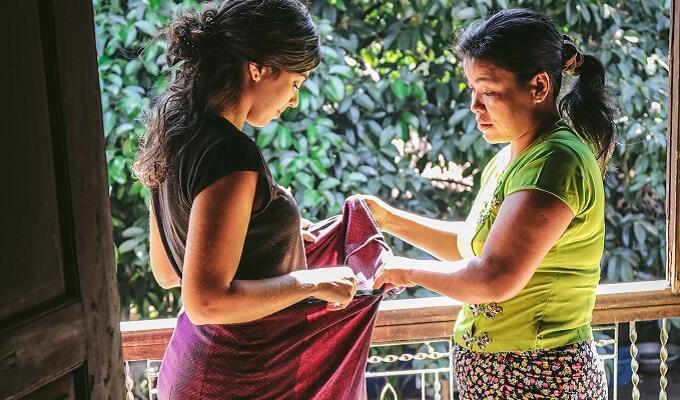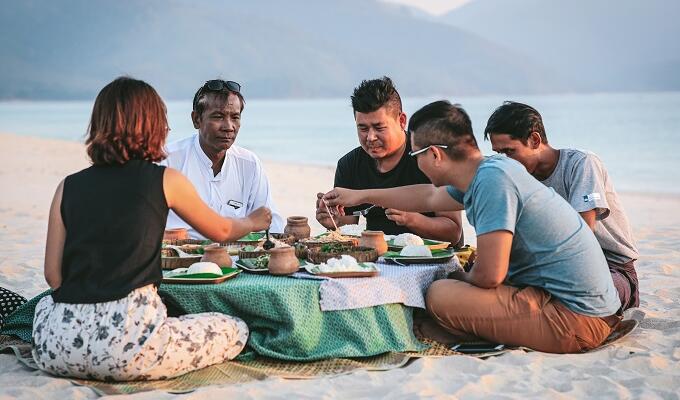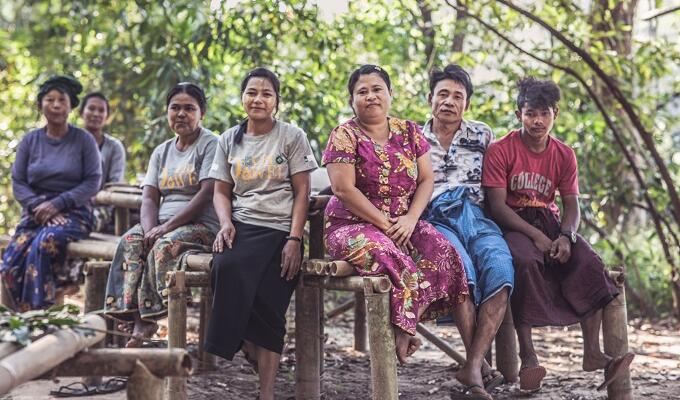


Expanding inclusive tourism in Myanmar
The challenge
After 2013, when the Republic of the Union of Myanmar opened certain areas to tourism, the number of international arrivals skyrocketed. Tourists flocked to see an undiscovered country boasting a rich cultural heritage.
By 2016, tourism supported around 1.6 million jobs or 5.7% of the workforce, and generated 6.6% of GDP ($2 billion), up from 3.6% in 2011. The boom drew primarily rural, poor and marginalized people into tourism value chains, with massive multiplier and positive spillover effects on other economic sectors.
The government adopted the Myanmar Responsible Tourism Policy (2012) and Tourism Master Plan (2013-2020) to avoid any damage from haphazard growth and for tourism to deliver ‘broad and equitable social, economic, and environmental benefits’ to the people of Myanmar.
The solution
ITC’s Inclusive Tourism in Myanmar project assists Myanmar to reach its tourism policy goals. The latest phase, running until June 2021, fosters economic opportunities by developing sustainable tourism products in the coastal Tanintharyi Region in southern Myanmar between Thailand and the Andaman Sea. This phase also consolidates previous work done in Kayah State in eastern Myanmar.
Following the successful Kayah model, the value-chain approach was adopted in Tanintharyi in 2019. Tourism service providers (including local guides, ground-handlers, hotels and restaurants) were trained to increase the quality of services sold by tour operators and directly to tourists.
The results
In 2019, in Loikaw (capital of Kayah) and Dawei (capital of Tanintharyi), tourist-related income for small and medium-sized enterprises and tourism service providers increased by 28% compared to 2018, with a 13% increase for women entrepreneurs and 5% increase for young people with tourist industry jobs.
Small firms and individual tourist service providers increased their competitiveness in both Kayah and Tanintharyi by undertaking a wide array of capacity-building activities from product development to quality management and marketing and branding.
In the first half of 2019, as many as 75 local informal service providers engaged tourists in community guiding, catering and artisanal workshop experiences in Kayah villages. Of these, almost 50 were women.
In 2019, nearly 40 new jobs were created in Kayah villages: income doubled in Htay Kho and Pan Pet villages, and by 24.5% in Hta Nee La Leh village. Overall, tourist arrivals in Kayah increased by 6% between 2018 and 2019, with international tourists rising by 27%. Tourist arrivals increased by 106% and 101% in Pan Pet and Hta Nee La Leh, respectively.
In Tanintharyi, new cultural tours, run in part by 48 new tourism service providers (of which 28 are women), began receiving tourists and earning money in November and December 2019. Exciting new experiences developed in Tizit and Kha Lone Htar villages included:
- Traditional Welcome Snack and Home Visit
- Fisher Life Greeting Gallery
- Hands-On Fisher Life Experience
- Sunset Beach Picnic in Tizit
- Nature Trail and Forest Picnic in Khalone Htar
- Vintage City House Walking Tour in Dawei
In January 2019, following an agreement between Myanmar, ITC and the United Nations World Tourism Organization, work on tourism statistics began by training officials in the Ministry of Hotels and Tourism, the Myanmar Central Bank, the Central Statistics Organization and the Immigration Authority. Nearly 100 representatives, 40% of whom were women, were coached in tourism statistics, expenditure, data processing and reporting, as well as setting up an inter-institutional statistics platform. The Ministry of Hotels and Tourism modified its border survey questionnaire as a result.
In 2019, marketing and branding activities focused on:
- Updating and producing new regional marketing communications for Kayah and Tanintharyi, and refreshing materials about other regions participating in the International Tourism Borse (ITB) in 2019
- Piloting digital marketing for Kayah with officials of the Ministry of Hotels and Tourism and local tourist businesses. Officials from Tanintharyi participated before the pilot is replicated there in 2020
Kayah is now a learning centre for inclusive tourism. In May 2019, a delegation from Myanmar’s western Chin State visited Kayah, and 60 participants went on study tours to ITC-supported villages. ITC-trained trainers can now run study tours and provide training in inclusive tourism.
Thirty Kayah craft producers, almost all women, were trained in marketing, product development and pricing. Additionally, hotels, restaurants and bars in Kayah learned how to incorporate local crafts into their décor to increase sales for craftspeople. ITC also organized a craft market as part of the National Conference on Communities and Tourism, with about 300 participants from Myanmar.
A systematic follow-up survey in June 2019 resulted in six new tour operators starting to sell ITC-developed products in Kayah State.
The future
The project is now working toward strengthening and establishing market linkages involving Myanmar and international tour operators as more products get going in Tanintharyi Region while digital marketing activities will be ramped up.



